| Srl | Item |
| 1 |
ID:
164657
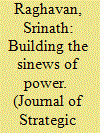

|
|
|
|
|
| Summary/Abstract |
This article analyses the military transformations that India underwent during the Second World War. It focuses on the institutional dimension of these changes and considers the longer-term changes wrought by the war in the composition of the army, the logistical and support infrastructure and the emergence of an indigenous military industrial base. Taken together, the article argues, these changes positioned India as a potential regional military power that was qualitatively different from the interwar period.
|
|
|
|
|
|
|
|
|
|
|
|
|
|
|
|
| 2 |
ID:
164658


|
|
|
|
|
| Summary/Abstract |
This paper focuses on the twentieth century administrative and institutional history of the ‘Indian’ Staff College. This institutional focus on the Staff College helps reveal the political, military and intellectual fault lines that have intersected with the processes of military institution-building in India. By focussing on the administrative challenges of the Staff College, I am to chart the historical development of the practices which have undergirded the delivery of professional military education on the subcontinent.
|
|
|
|
|
|
|
|
|
|
|
|
|
|
|
|
| 3 |
ID:
164660
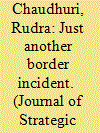

|
|
|
|
|
| Summary/Abstract |
The India–Pakistan War of September 1965 has attracted little attention in the larger body of work on South Asia. Further, almost nothing has been written on the earlier skirmish, in April 1965, between Indian and Pakistani security forces in the Rann-of-Kutch, an uninhabited salt marsh. This article argues that the limited conflict in the Rann, its immediate consequences, and its impact on Pakistani military and civilian leaders were central to Pakistan’s consideration of a military solution to the ongoing dispute in Kashmir, which then led to Indian retaliation and the outbreak of war.
|
|
|
|
|
|
|
|
|
|
|
|
|
|
|
|
| 4 |
ID:
164659
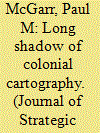

|
|
|
|
|
| Summary/Abstract |
This article examines British responses to the Sino-Indian border war of 1962. It illustrates how, in the years leading up to the war, Britain’s colonial legacy in the Indian subcontinent saw it drawn reluctantly into a territorial dispute between Asia’s two largest and most powerful nations. It analyses disagreements in Whitehall between the Foreign Office and Commonwealth Relations Office over the relative strength of India and China’s border claims, and assesses how these debates reshaped British regional policy. It argues that the border war was instrumental in transforming Britain’s post-colonial relationship with South Asia. Continuing to filter relations with India through an imperial prism proved unsatisfactory, what followed was a more pragmatic Indo-British association.
|
|
|
|
|
|
|
|
|
|
|
|
|
|
|
|
| 5 |
ID:
164664
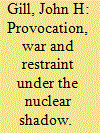

|
|
|
|
|
| Summary/Abstract |
The Kargil conflict was a limited war between India and Pakistan fought along the Kashmir Line of Control during the spring/summer of 1999. Named for the principal town in the combat zone on the Indian side, it was the first open warfare between India and Pakistan as declared nuclear weapons states and included the first combat employment of the Indian Air Force since 1971. Despite its intensity, it was also characterised by considerable restraint on both sides. The potential for conventional escalation, however, was high and the possibility of nuclear confrontation could not be excluded. It had significant long-term ramifications for both countries and constitutes an important part of the backdrop to their relations today.
|
|
|
|
|
|
|
|
|
|
|
|
|
|
|
|
| 6 |
ID:
164662
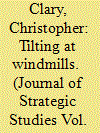

|
|
|
|
|
| Summary/Abstract |
This article examines decision-making mistakes made by U.S. President Nixon and national security advisor Kissinger during the 1971 India-Pakistan crisis and war. It shows that Nixon and Kissinger routinely demonstrated psychological biases that led them to overestimate the likelihood of West Pakistani victory against Bengali rebels as well as the importance of the crisis to broader U.S. policy. The evidence fails to support Nixon and Kissinger’s own framing of the 1971 crisis as a contest between cool-headed realpolitik and idealistic humanitarianism, and instead shows that Kissinger and Nixon’s policy decisions harmed their stated goals because of repeated decision-making errors.
|
|
|
|
|
|
|
|
|
|
|
|
|
|
|
|
| 7 |
ID:
164656


|
|
|
|
|
| Summary/Abstract |
This Special Issue looks at the importance of institutions and the role played by international actors in crucial episodes of India’s strategic history. The contributions trace India’s tryst with war and peace from immediately before the foundation of the contemporary Indian state to the last military conflict between India and Pakistan in 1999. The focus of the articles is as much on India as it is on Pakistan and China, its opponents in war. The articles offer a fresh take on the creation of India as a regional military power, and her approach to War and Peace in the post-independence period.
|
|
|
|
|
|
|
|
|
|
|
|
|
|
|
|